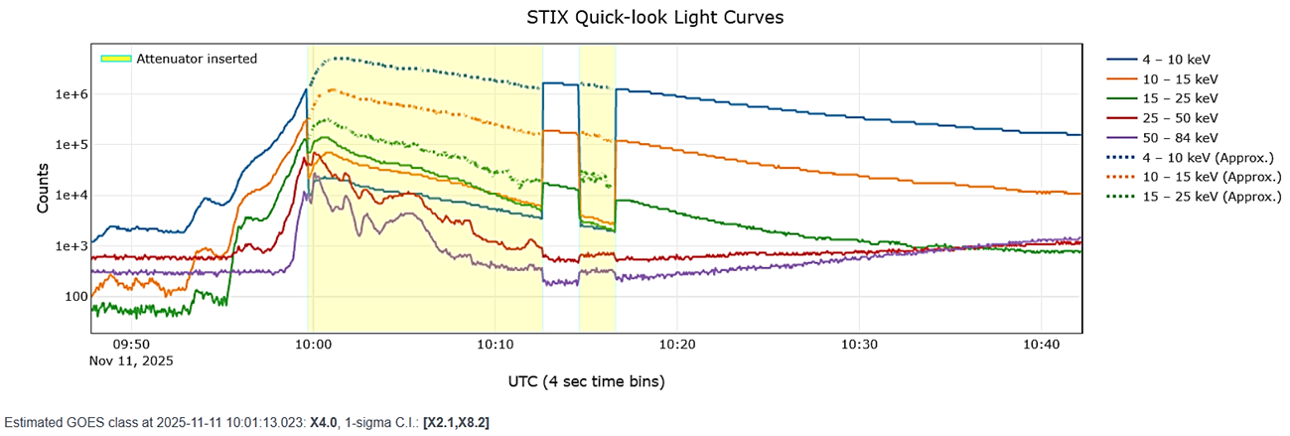On 11 November 2025, the largest solar flare of the year so far erupted. The X5.1 flare reached its peak at 10:04 UTC. The event was imaged by all relevant solar satellites and their extreme ultraviolet (EUV) cameras: PROBA2 (SWAP), GOES (SUVI), Solar Orbiter (FSI and HRI), SDO (AIA), and STEREO-A (EUVI). The combination clips underneath were created with SWHV (Space Weather JHelioViewer - https://swhv.oma.be/user_manual/). They show first nearly full sun EUV images of the event, highlighting the flare's location and the coronal wave (also known as EIT wave or EUV wave - see this STCE newsitem). The second clip zooms in on the blast site and shows other features such as coronal dimming and post-flare coronal loops. Top left is from PROBA2/SWAP, top right is from GOES/SUVI, lower left is Solar orbiter (FSI), and lower right is from SDO/AIA.
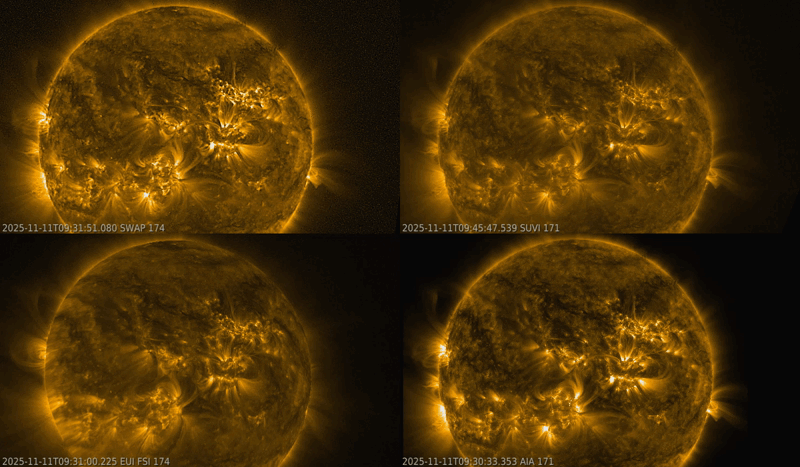
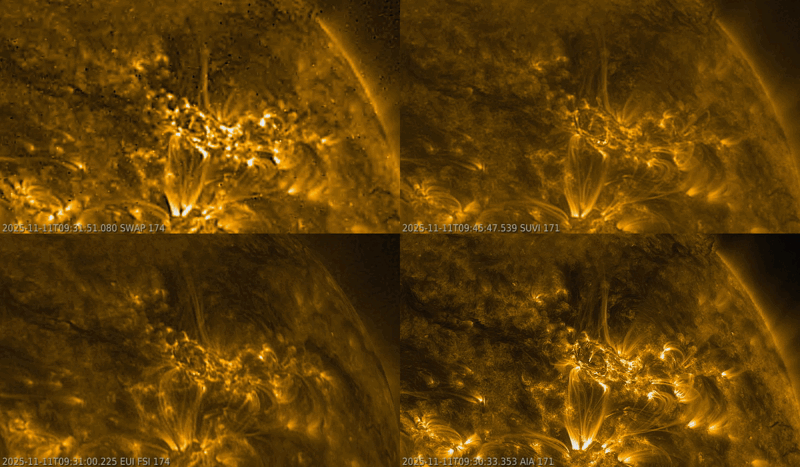
The clips above cover 2 hours, from 09:30 to 11:30 UTC. They were made with the images available in SWHV. These images show detail differences in image cadence, resolution of the images ("sharpness"), and sensitivity to pixel saturation (blooming - see elsewhere in this newsitem as well as this STCE newsitem). A table comparing the instruments in terms of resolution, image cadence, field-of-view and pixel system can be found underneath. Some of these data, such as resolution or cadence can change for various reasons, such as the varying distance to the Sun, the observing mode, and the filter that is being used. In this case, filters at 17.1 nm and 17.4 nm were used, showing the lower corona (outer atmosphere of the Sun) at temperatures of respectively 700.000 and 1 million degrees. Note that SWHV does not contain all the images, or it may take a while to get them all available. For the 2-hour coverage, there were 120 images for AIA, about 20 for SWAP and FSI, but only 6 for SUVI. HRI images were not available yet in the SWHV database, and for EUVI only 1 image was available. Also, at the time of the X5 flare, Solar Orbiter was 26 million km closer to the Sun than Earth. Standing-by the release of the HRI images, the highest resolution and cadence images of the X5 flare that are currently available, are those from SDO/AIA. A clip (zoom) of the eruption by AIA 171 can be found underneath.

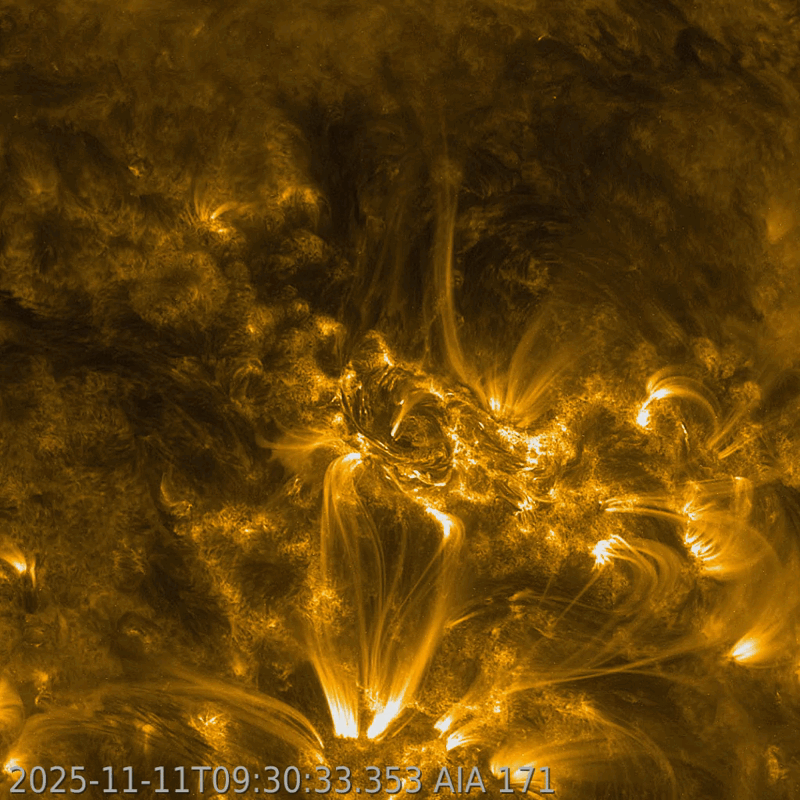
For EUVI, one can change the filter to e.g. EUVI 195 which has more images available and shows the corona at a slightly higher temperature near 1.3 million degrees. Because STEREO-A is about 50 degrees ahead of the Earth at the moment, the flare as seen by EUVI appears in the eastern ("left") solar hemisphere, contrary to the other solar images which have the event in their western ("right") hemisphere. The EUVI 195 image underneath shows the X5 flare as a bright streak, a consequence of the so-called blooming, i.e., saturation of CCD cells, corresponding to the brightest part of a flare source, and spilling of excessive electrons from these cells along CCD columns. This is a typical feature for AIA and EUVI images, whereas SWAP and FSI/HRI have an active pixel system (SIDC/PROBA2) against this blooming (see e.g. this STCE newsitem for advantages). GOES/SUVI has also some way to deal with blooming (Darnel et al. 2022). For EUVI imagery, scientists have used the presence, more precisely the length, of the light streak from a strong flare as a proxy for the intensity of that flare in soft x-rays (Chertok et al. 2015). In this case, the maximum length of the observed streak (around 10:02 UTC) indicates a peak flux in the X1.8-X7.0 range, with X3.5 as the most likely value (corrected for the GOES rescaling as outlined by NOAA/NCEI).
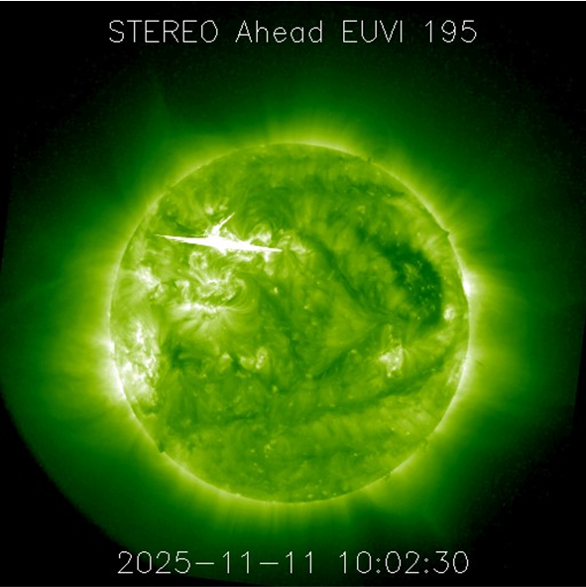
A similar approach can be taken using the hard x-ray measurements by the Spectrometer Telescope for Imaging X-rays (STIX ; Krucker et al. 2020) on board Solar Orbiter. The methodology has been outlined by Stiefel et al. (2025), and was also briefly discussed in this STCE newsitem. Based on the STIX observations shown underneath (STIX data Center), the eruption reached an estimated GOES soft x-ray intensity between X2.1 and X8.2, with X4.0 the most likely value. Hence, both the EUVI as the STIX proxied values were close to the actual observed soft x-ray value of X5.1, as observed by GOES.
